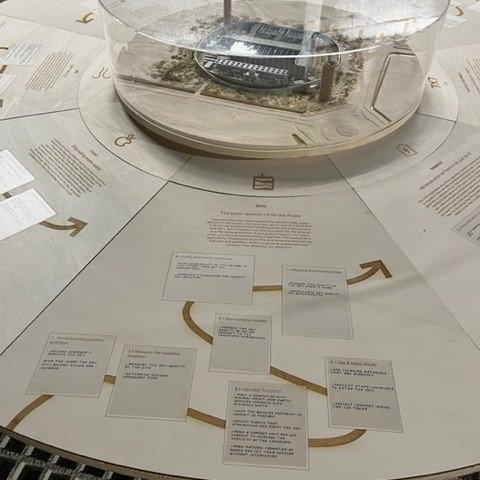International Architecture Biennale Rotterdam
28.09.2022
The consequences of our footprint on Earth are becoming increasingly apparent: melting ice caps, forest fires, floods and periods of drought. The current situation was predicted 50 years ago by the Club of Rome, an informal group of academics, scientists, politicians, diplomats and industrialists who published The Limits to Growth in 1972. In this report, the club outlined the possible consequences of exponential increases in population, agricultural production, resource extraction, industrial production, pollution and biodiversity loss. The report caused a worldwide stir and marked the beginning of environmental awareness.
Fifty years after the publication of the Club of Rome report, the 10th edition of the Architecture Biennale Rotterdam is taking stock. The exhibition brings historical research (from 1972 onward), inspiring practical examples (in 2022) and future scenarios (towards 2072) together. This overview paints a picture that is both worrisome and hopeful. The exhibition features the work of architects, urban designers, artists, academics and landscape designers that documents and maps the causes and consequences of climate change. Their observations create a contemporary landscape that reflects the effects of climate change and calls for a response to this constructed hyperreality
As a starting point, the biennale formulates three strategies that designers can follow: those of the Accelerator, the Activist, and the Ancestor. The Accelerator is efficient through the use of smart technology. The Activist works together, in the here and now, with local communities on small-scale bottom-up projects that have a great deal of social support in neighborhoods and districts. The Ancestor considers the consequences that design choices made now or in the past will have for future generations. The projects and practices that the Architecture Biennale Rotterdam 2022 gathers together in the name of these three strategies are ambitious, often the result of long-term research, and widely applicable. They have been developed in close collaboration with local actors, take the spatial aspect of socioecological issues as their starting point, and use time as a tool in the design process.
In our model, we show how we applied the 7 flows of Building with a Positive Footprint to the design of the Holland Hydrogen 1
Vincent vander Meulen: Holland Hydrogen I and the book "Building with a positive footprint" both formulate answers to two very pressing questions. How can we decarbonize our energy needs? And how do we stop producing buildings with a negative impact on the environment?
It's about time is on view until 13 November 2022 at the Ferro Dome in Rotterdam
